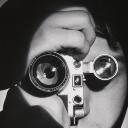Yahoo Answers is shutting down on May 4th, 2021 (Eastern Time) and the Yahoo Answers website is now in read-only mode. There will be no changes to other Yahoo properties or services, or your Yahoo account. You can find more information about the Yahoo Answers shutdown and how to download your data on this help page.
Trending News
I have the Canon PowerShot G1 X Mk III. It has a crop sensor in it, but I can't help but feel like my images are the same as my phone?
What's the deal with that?? Why does the quality feel the same on my crop sensor as it is on my tiny phone camera (Note 10)?
Shooting during the day, good 👍
Shooting in low light, 👎 forget about it... it's garbage.
Same as my phone's camera...
I used to have the 70d and the 80d, and and I never felt like the quality of those crop sensors were garbage in low light, so what's the deal with this crop sensor sized point and shoot being so bad?
After posting this, I did think about the fact that although I shoot in RAW, when I transfer to my phone, it transfers only a jpeg, so I guess I have less dynamic range to work with
4 Answers
- keerokLv 74 weeks ago
What you are seeing is correct. The quality of pictures you get from your camera and your phone are the same. So the question is why. That's because image quality does not depend on the camera alone. It's almost entirely reliant on the skill of the photographer. The camera is only a tool. The choice of tool tells a lot about the photographer. Phone? Ha-ha-ha...
The 70D and 80D are a potent cameras. Stop blaming them. They're just following orders (or maybe the lack of it). Learn the basic principles of photography to improve your shots and then you will see the difference between a camera and a phone. If you persevere, you will reach that point where you will know beforehand when a photo will come out garbage when using your phone and then if you study more, you will reach another point when you will realize that no matter what settings you choose, the camera won't get it the way you want so you will have to invest more on lighting to correct the problem. After all, photography is all about the light.
- qrkLv 74 weeks ago
Your update says it all. Since you are viewing your images on your phone, you won't see much difference in image quality. If you look at your images on a computer monitor (say a 24" IPS monitor) you will see the differences, even between the JPEGs. Things become much more apparent when shooting in low light. A few years ago, I was with a group of people when the northern lights appeared. One guy with his cell phone exclaimed how great his cell phone aurora images were (looking at his phone screen). When we looked at the images on a 24" computer monitor, they looked like crap (lots of noise and over processing). On the other hand, my 7 year old APS-C DSLR created nice images.
Since you say low light images from your G1 look like crap, one has to wonder if you know how to take low light images. Do you know what ISO setting your camera is shooting at? If not, switch to a manual ISO setting and keep it below 1000, or whatever ISO setting looks decent. Compare noise and detail between your G1 and phone images.
A phone is meant to be a point & shoot. They do a great job for the masses. A dedicated camera with manual controls is a tool that takes learning & experience to get the best images since the camera doesn't have the processing that phones apply to images (done on purpose).
- SumiLv 74 weeks ago
You say that at night your G1X II takes garbage pictures. My question to you is: how are you taking night shots? Are you taking them with the flash, or with the flash off, but the camera in full auto which will force the camera to use a very high ISO? Or, are you taking the time to put the camera on a tripod, use a low ISO with the camera in manual mode? My guess is full auto.
The difference in low-light performance between the 80D and G1X is about one stop when using the same exposure on both cameras. However, as you know, the 80D can be equipped with a much faster lens and/or one with IS allowing for the use of a much lower ISO.
The G1X II takes 14-bit RAW images. These files have 16,384 tones per RGB color channel. When converted to 8-bit JPEG files, the file will now have 256 tones. That's a loss of about 98%!
- Jimmy CLv 74 weeks ago
Your update gives the explanation for the loss of quality. You have figured it out.
I transfer all my photos to my computer and do all cropping and editing on the computer in a large screen so I can see what is going on.



